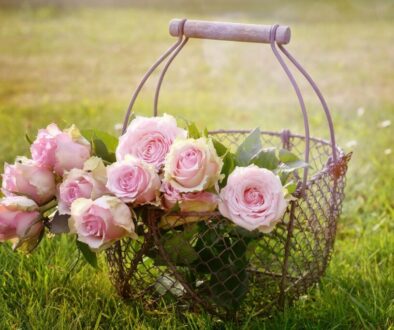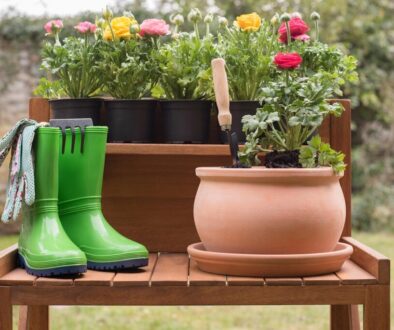The Lazy Gardener’s Guide to a Thriving Vegetable Patch
No-Dig Gardening: Less Work, Healthier Soil
Tired of back-breaking digging, endless weeding, and stubborn soil problems? No-dig gardening might be the gardening hack you’ve been looking for! This method isn’t just about saving effort—it’s about letting nature do the hard work while you enjoy the benefits. So, please grab a cup of tea, put that shovel down, and let’s dig into (pun intended!) the wonders of no-dig gardening.
What Is No-Dig Gardening?
No-dig gardening is exactly what it sounds like—a method that skips the traditional digging and tilling process. Instead of breaking up the soil, you add layers of organic matter like compost, straw, or mulch right on top. Over time, earthworms, microbes, and other soil creatures naturally mix these materials, creating rich, fluffy soil. The result? Healthier plants, fewer weeds, and a much happier gardener.
Think of it like making lasagna, but instead of layers of pasta and cheese, you’re stacking compost and mulch. The layers break down naturally, feeding your plants while protecting the soil structure. It’s the perfect way to work smarter, not harder in the garden.
Why Dig When Nature Does It for You?
Traditional gardening methods involve tilling or digging to aerate the soil and mix in nutrients, but this can do more harm than good. Every time you dig, you disturb beneficial microbes and fungi that help plants grow. Not to mention, you bring weed seeds to the surface, practically inviting them to take over your garden!
With no-dig gardening, you’re keeping those helpful organisms undisturbed, allowing them to improve the soil naturally. Earthworms become your little underground workforce, moving organic material around while aerating the soil. It’s like having a tiny, free gardening team working 24/7 beneath your plants!
Plus, the top layer of mulch or compost acts as a natural weed barrier. Instead of spending hours pulling weeds, you can sit back, relax, and enjoy a garden that practically takes care of itself. Sounds like a dream, right?
How to Start a No-Dig Garden
The best part about no-dig gardening? You don’t need fancy tools or expensive materials to get started. Here’s a simple step-by-step guide to setting up your own no-dig garden:
- Pick Your Spot: Choose a sunny location, whether it’s on grass, an old garden bed, or even a neglected patch of weeds.
- Lay Down Cardboard or Newspaper: This blocks weeds and grass while slowly decomposing into the soil. Make sure to remove any plastic tape from the cardboard.
- Add a Thick Layer of Compost: Spread at least 2–4 inches of rich compost over the cardboard. This will be your main growing medium.
- Mulch Like a Pro: Top it off with a layer of straw, wood chips, or dried leaves to keep moisture in and weeds out.
- Start Planting: Simply plant your seeds or seedlings directly into the compost. No digging is required!
And that’s it! As the materials break down, they create a self-sustaining cycle of fertility, making your gardening life easier with every season.
The Perks of No-Dig Gardening
Still not convinced? Here are some of the biggest benefits of going no-dig:
- Less Weeding: The mulch suppresses weeds, meaning less time spent on your knees battling pesky intruders.
- Better Soil Health: Healthy microbes and worms thrive, naturally improving soil structure and fertility.
- Less Watering: Mulch keeps moisture locked in, so you won’t need to water as often.
- No More Back Pain: Forget about hours of digging—your spine will thank you!
Whether you’re a beginner or an experienced gardener looking for an easier way, no-dig gardening is a game-changer. Why fight against nature when you can let it do the work for you? Give it a try, and you’ll wonder why you ever picked up a shovel in the first place!
Self-Seeding Veggies: Crops That Come Back on Their Own
Imagine having a garden that practically plants itself year after year. Sounds like magic, right? Well, self-seeding veggies make that dream a reality! These plants drop their own seeds at the end of the season, sprouting fresh and ready to grow again without you lifting a finger. Let’s explore how you can harness the power of self-seeding crops for an effortless, thriving garden.
How Self-Seeding Works
Self-seeding vegetables follow nature’s perfect cycle. As they mature, they produce flowers and, eventually, seeds. When left alone, these seeds fall to the ground, settle in over winter, and germinate when conditions are just right. Unlike store-bought seeds, these hardy little survivors are already adapted to your garden’s environment, making them stronger and more resilient year after year.
You don’t need to fuss over planting schedules or reordering seed packets—your garden keeps the cycle going on its own! Just a little patience and light maintenance will have your beds bursting with new life every season.
Best Self-Seeding Vegetables to Grow
Not all veggies are natural self-seeders, but some thrive on their own with little intervention. Here are a few top picks:
- Tomatoes: Drop seeds easily, often sprouting up in surprising places.
- Lettuce: Allows you to enjoy fresh greens almost year-round.
- Carrots: Tiny seeds settle in and reappear like magic.
- Cilantro: Loves to reseed itself, ensuring a steady supply of fresh herbs.
- Squash & Pumpkins: If left alone, they’ll take over with new vines each season.
By planting these crops once, you’ll reap the rewards for years to come!
Encouraging Self-Seeding in Your Garden
Want to make the most of self-seeding veggies? Here are some easy ways to help them thrive:
- Let Plants Flower & Seed: Resist the urge to pull plants at the end of the season—let them complete their life cycle.
- Avoid Over-Mulching: Thick mulch can smother tiny seedlings before they sprout.
- Mark Seedling Areas: Label spots where seeds naturally drop to avoid accidental weeding.
- Thin Out Crowded Sprouts: Too many plants in one spot can stunt growth, so give them space to flourish.
Self-seeding veggies offer a stress-free way to keep your garden productive with minimal effort. Once you try it, you’ll wonder why you ever spent so much time replanting!
Mulching for Moisture & Weed Control: A Simple Time-Saver
Mulching might just be the ultimate gardening hack, saving you time, effort, and frustration all in one go. Not only does it keep your soil moist, but it also keeps weeds from taking over your precious garden beds. If you’re tired of constant watering and relentless weeding, then mulching is about to become your new best friend.
Why Mulch Works Like Magic
Think of mulch as a protective blanket for your soil. It helps retain moisture by reducing evaporation, meaning your plants stay hydrated longer without constant watering. On top of that, it blocks sunlight from reaching weed seeds, preventing them from sprouting and taking over your garden. Less weeding? Yes, please!
Organic mulches like straw, wood chips, and dried leaves also break down over time, improving soil fertility and feeding your plants naturally. It’s like giving your garden a slow-release buffet of nutrients while cutting down on work. Who wouldn’t want that?
Best Types of Mulch for Your Garden
Not all mulches are created equal, so choosing the right one can make a big difference. Here are some great options:
- Straw: Great for vegetable gardens, retains moisture well, and adds organic matter as it decomposes.
- Wood Chips: Perfect for pathways and around trees, but avoid mixing them directly into garden beds.
- Grass Clippings: A free and nutrient-rich option, but apply in thin layers to prevent mold.
- Dried Leaves: Easily available in fall, great for improving soil structure over time.
Each type has its own benefits, so experiment to see which works best for your garden setup.
How to Mulch Like a Pro
Mulching is simple, but a few pro tips will help you get the best results:
- Apply a 2–4 inch layer: Too thin, and it won’t be effective; too thick, and it might block air and water.
- Keep mulch away from plant stems: This prevents rot and discourages pests from moving in.
- Replenish as needed: Organic mulch breaks down over time, so top it up each season.
Mulching is one of those rare gardening tricks that gives you more time to enjoy your garden while reducing the hard work. Give it a try, and soon, you’ll wonder how you ever gardened without it!
Low-Effort Watering Solutions: Drip Irrigation and Self-Watering Ideas
Keeping your plants hydrated doesn’t have to mean spending hours with a hose. With a few smart watering solutions, you can cut down on effort while keeping your garden lush and thriving. Drip irrigation and self-watering techniques are game-changers that make watering almost effortless.
Drip Irrigation: The Slow and Steady Winner
Drip irrigation delivers water right to the roots of your plants, minimizing waste and ensuring deep hydration. Unlike overhead watering, which can lead to evaporation and runoff, a drip system provides slow, consistent moisture where it’s needed most.
Setting up a drip irrigation system is easier than you think. You’ll need a main water source, tubing, and small emitters that release water gradually. Once in place, you can set it on a timer, meaning you’ll never forget to water again! Plus, it reduces the risk of fungal diseases by keeping leaves dry—your plants will thank you for it.
Self-Watering Containers: Perfect for Busy Gardeners
If you love container gardening but hate the constant watering, self-watering pots are a dream come true. These containers have a built-in reservoir that allows plants to absorb moisture as needed. No more dry, thirsty plants on hot days!
You can even make your own self-watering system using plastic bottles, buckets, or even a simple wicking system with fabric strips. Just set it up once, and let your plants take care of their own hydration. It’s the ultimate low-maintenance solution!

Watering Smarter, Not Harder
Want to make watering even easier? Here are a few extra tips:
- Water early in the morning to reduce evaporation and give plants time to absorb moisture before the heat kicks in.
- Use mulch to lock in moisture and reduce the need for frequent watering.
- Collect rainwater in barrels for an eco-friendly and cost-effective water source.
With the right watering solutions, you’ll spend less time dragging a hose around and more time enjoying a thriving, stress-free garden.
Happy Gardening!







